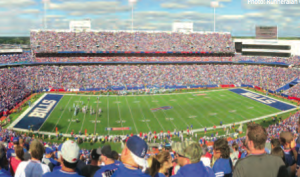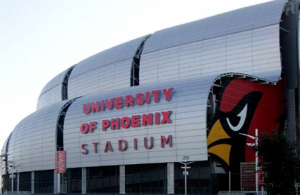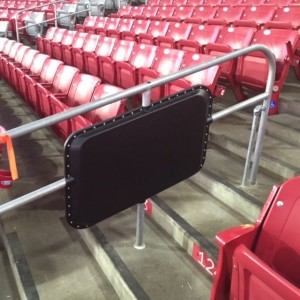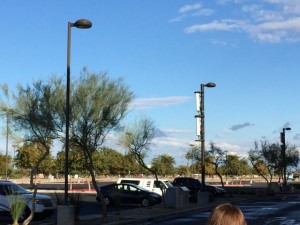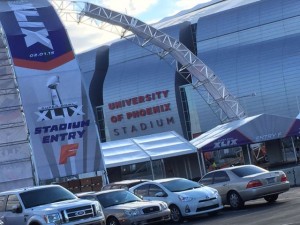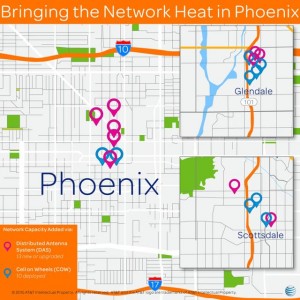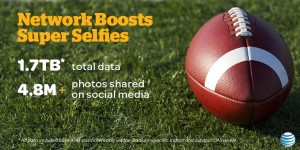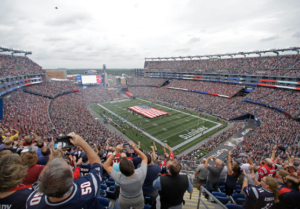
Gillette Stadium before the Sept. 11 game vs. the Miami Dolphins. Credit: Steve Milne, AP, via Patriots.com
Sunday’s 36-17 New England victory over the Pittsburgh Steelers in the AFC Championship game saw the biggest Wi-Fi traffic numbers, with 38,436 unique users connecting to the network at some point during game day — a 57 percent take rate based on the reported sellout crowd attendance number of 66,829. Original stats provided by Fred Kirsch, publisher & vice president of content at Kraft Sports Productions (and overseer of all things technology at the stadium) showed a total tonnage of 3.70 terabytes for Wi-Fi traffic Sunday, with a peak concurrent client number of 30,824 and a peak throughput total of 3.14 Gbps.
That total was reset to 5.11 TB when Kirsch said additional traffic from “postgame activities” (likely the trophy presentations) was added in. The 5.11 TB mark puts Sunday’s game into the MSR unofficial “Top 5” list of single-day Wi-Fi traffic marks, supplanting the first College Football Playoff championship game, which saw 4.93 TB of Wi-Fi used at AT&T Stadium on Jan. 12, 2015. (We are still waiting for Wi-Fi figures from this year’s CFP champs game, so our list may change again soon!)
The Extreme Networks-based network saw almost a similar stress during the Pats’ 34-16 victory over the Houston Texans on Jan. 14, according to figures from Kirsch. Even though cold, rainy conditions persisted at both games, for the Texans game the Gillette network saw 2.97 TB of total traffic, with 35,536 unique connections — a 53 percent take rate. Peak concurrent connections on Jan. 14 were 28,620, while peak bandwidth use was 2.76 Gbps.
THE NEW TOP 5 FOR WI-FI
1. Super Bowl 50, Levi’s Stadium, Santa Clara, Calif., Feb. 7, 2016: Wi-Fi: 10.1 TB
2. WrestleMania 32, AT&T Stadium, Arlington, Texas, April 3, 2016: Wi-Fi: 6.77 TB
3. Super Bowl XLIX, University of Phoenix Stadium, Glendale, Ariz., Feb. 1, 2015: Wi-Fi: 6.23 TB
4. Alabama vs. Texas A&M, Kyle Field, College Station, Texas, Oct. 17, 2015: Wi-Fi: 5.7 TB
5. Pittsburgh Steelers vs. New England Patriots, AFC Championship Game, Gillette Stadium, Foxborough, Mass., Jan. 22, 2017: Wi-Fi: 5.11 TB
